Generally speaking, it's not recommended to change the watering duration generated by the ET Smart Schedule, unless you are a professional. This watering duration is customized for your vegetation by the ImoLaza Watering Duration Expert advanced calculation model based on the area-related parameters you provide. If you change it, it may affect the watering effect. But if you really have special circumstances that need to be adjusted, you can use the following two methods:
1. Directly modify the watering duration value.
Tap the schedule you want to adjust the irrigation duration for and enter the schedule details page. Then tap “Watering Duration” and adjust the watering duration for each zone. Finally, tap “Confirm” to save the changes.
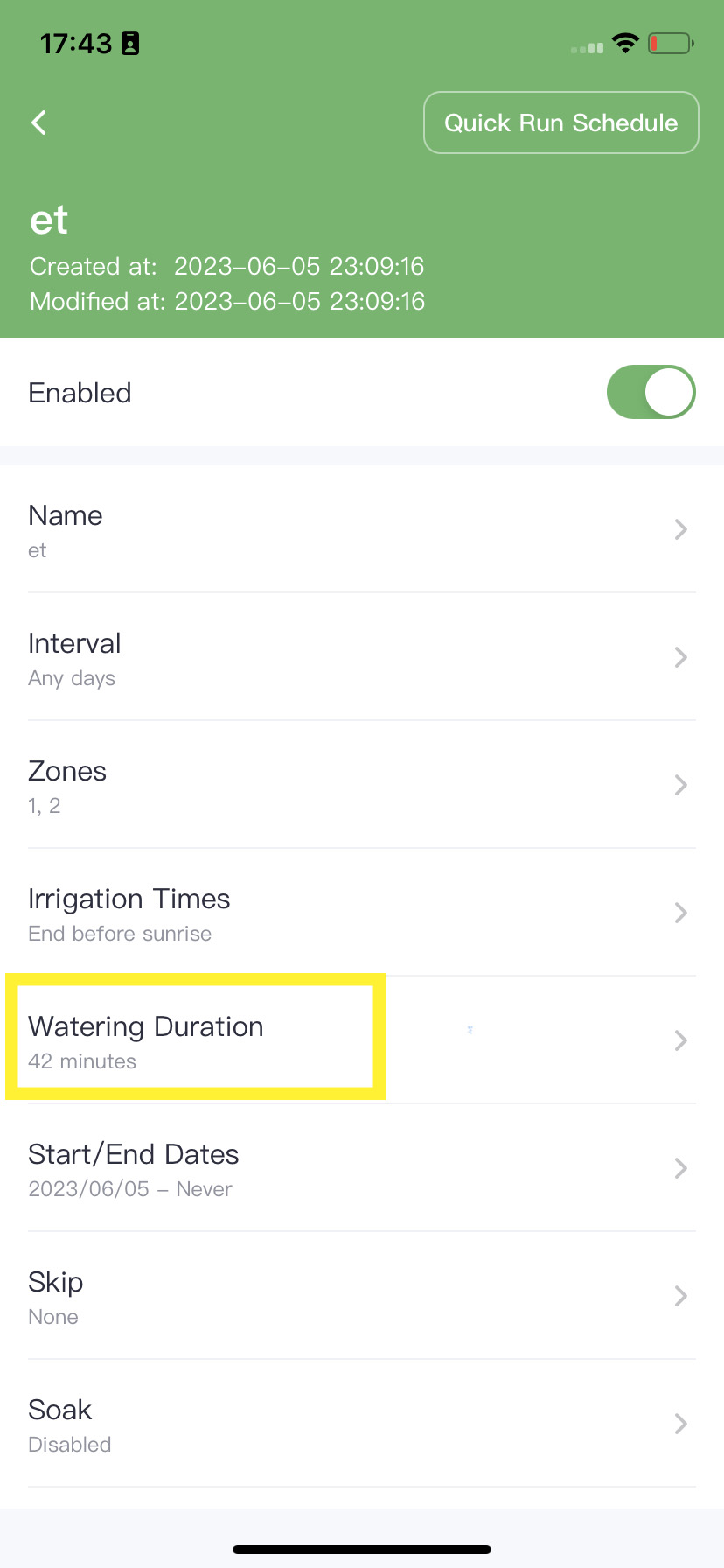
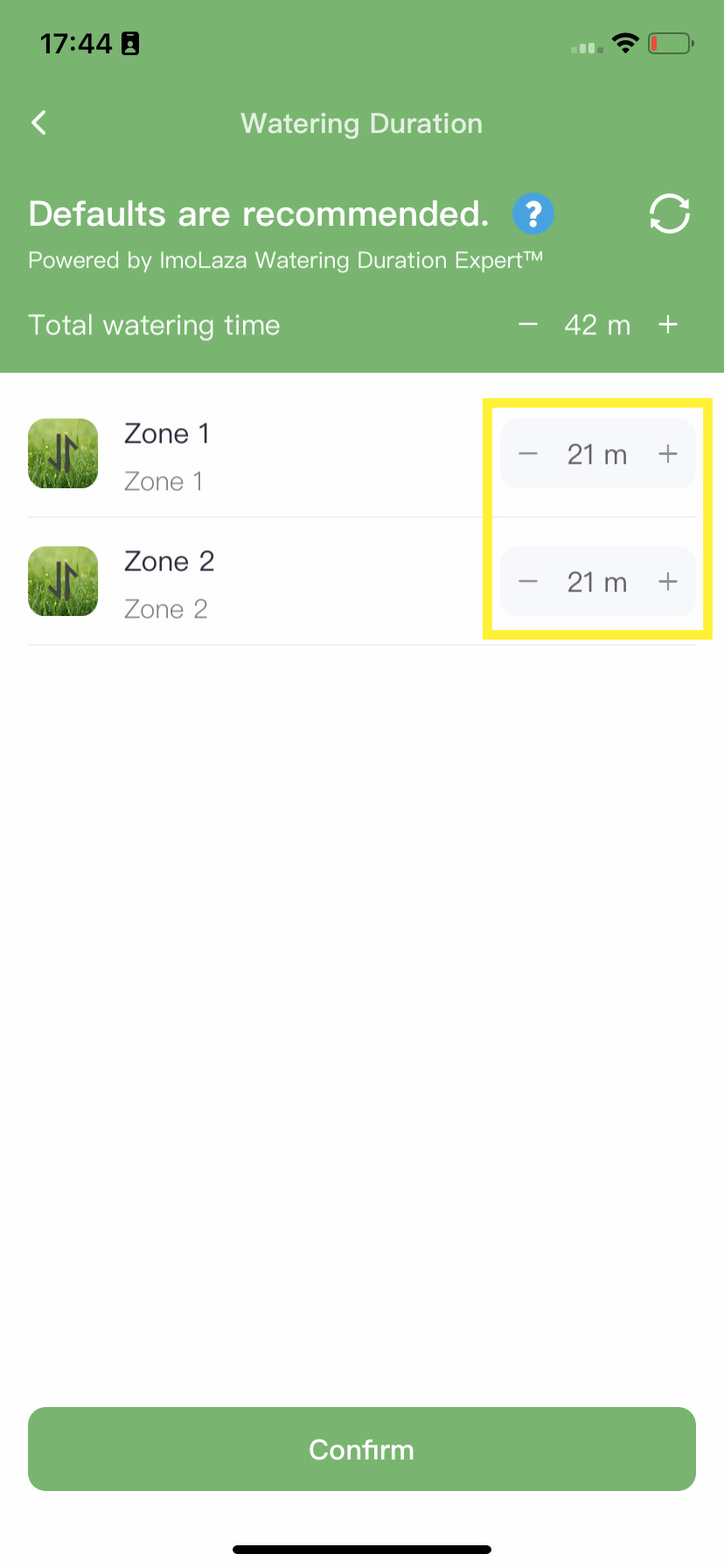
2. Fine-tuning the advanced zone settings.
The ET Smart Schedule utilizes multiple advanced zone settings as raw data for its data model to calculate irrigation duration and frequency. Each parameter adjustment directly affects the execution of the schedule. The following information will explain how advanced zone settings influence the schedule execution, and you can fine-tune these data parameters to adjust your schedule.
Here is a table summarizing how various parameters affect irrigation duration and frequency:
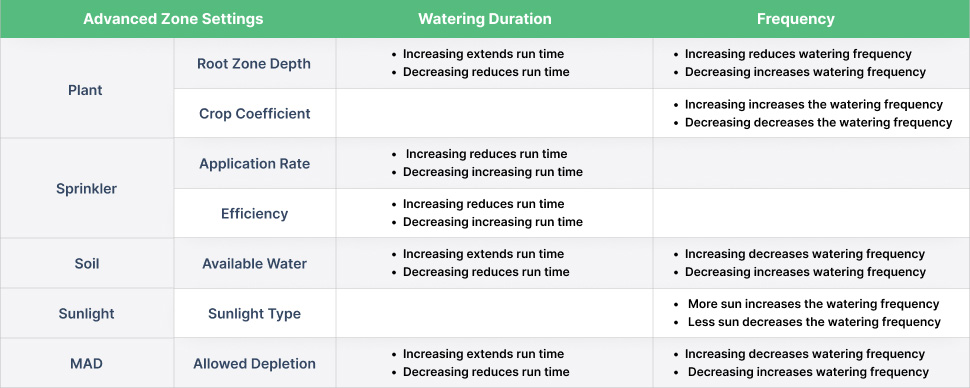
Crop Coefficients and Root Zone Depth
Crop coefficients are assigned to each crop type and are used to estimate evapotranspiration (ET) rates. These coefficients represent the ratio of observed ET for a specific crop. By adjusting the crop coefficient lever, you can modify the watering frequency accordingly. Increasing the crop coefficient will result in more frequent watering, while decreasing it will reduce the watering frequency. To achieve the desired watering schedule, it is recommended to adjust the crop coefficient in increments of +/- 10% and observe the effect. Remember to monitor the watering cadence and make further adjustments if necessary.
Root zone depth affects the irrigation demand and schedule. Each crop has a specific RZD value and a crop coefficient. Increasing the RZD value will increase the irrigation amount, which will extend the watering time and reduce the watering frequency. Decreasing the RZD value will decrease the irrigation amount, which will shorten the watering time and increase the watering frequency.
Here are the default values of root zone depth and crop coefficient for certain plants based on the industry standard.

Application Rate and Efficiency
Sprinkler application rate means how much water your sprinkler heads are applying to your zone per hour. Spray head efficiency means how evenly your sprinkler heads distribute water across your zone. Higher application rate and efficiency result in lower total run time, and lower application rate and efficiency result in higher total run time.
Here are the default values of application rate and efficiency for certain plants based on the industry standard.

Available Water
Available water is the amount of water that can be stored in soil and be available for plants, and it is affected by soil type. The higher the available water value, the larger the irrigation amount, the longer the watering time, and the lower the watering frequency. The lower the available water value, the smaller the irrigation amount, the shorter the watering time, and the higher the watering frequency.
Here is the default value for each soil type.

Sunlight Type
Sunlight type determines crop coefficient, crop coefficient determines ET value. A lower sunlight exposure for an area will result in a lower crop coefficient and ET value, which will lead to a lower watering frequency.
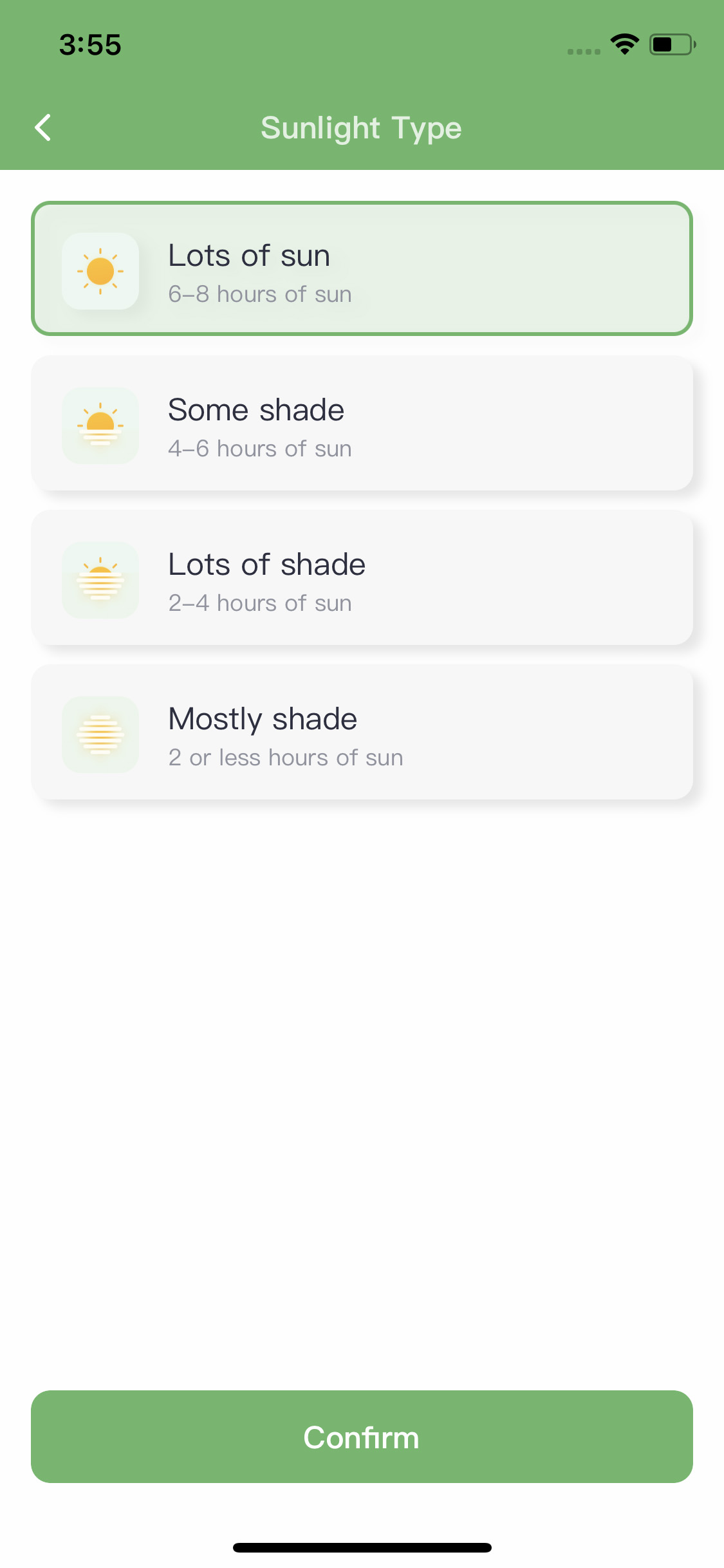
Allowed Depletion
Allowable depletion refers to the amount of water plants can consume from the soil before being stressed. It represents the percentage of water available in the root zone that plants can access before irrigation is needed. Increasing this percentage reduces the amount of water required for irrigation, resulting in shorter run times and increased watering frequency. Decreasing the allowable depletion percentage increases the amount of water needed for irrigation, leading to longer run times and reduced watering frequency. If you are not a professional, we recommend keeping the default value of 50%.
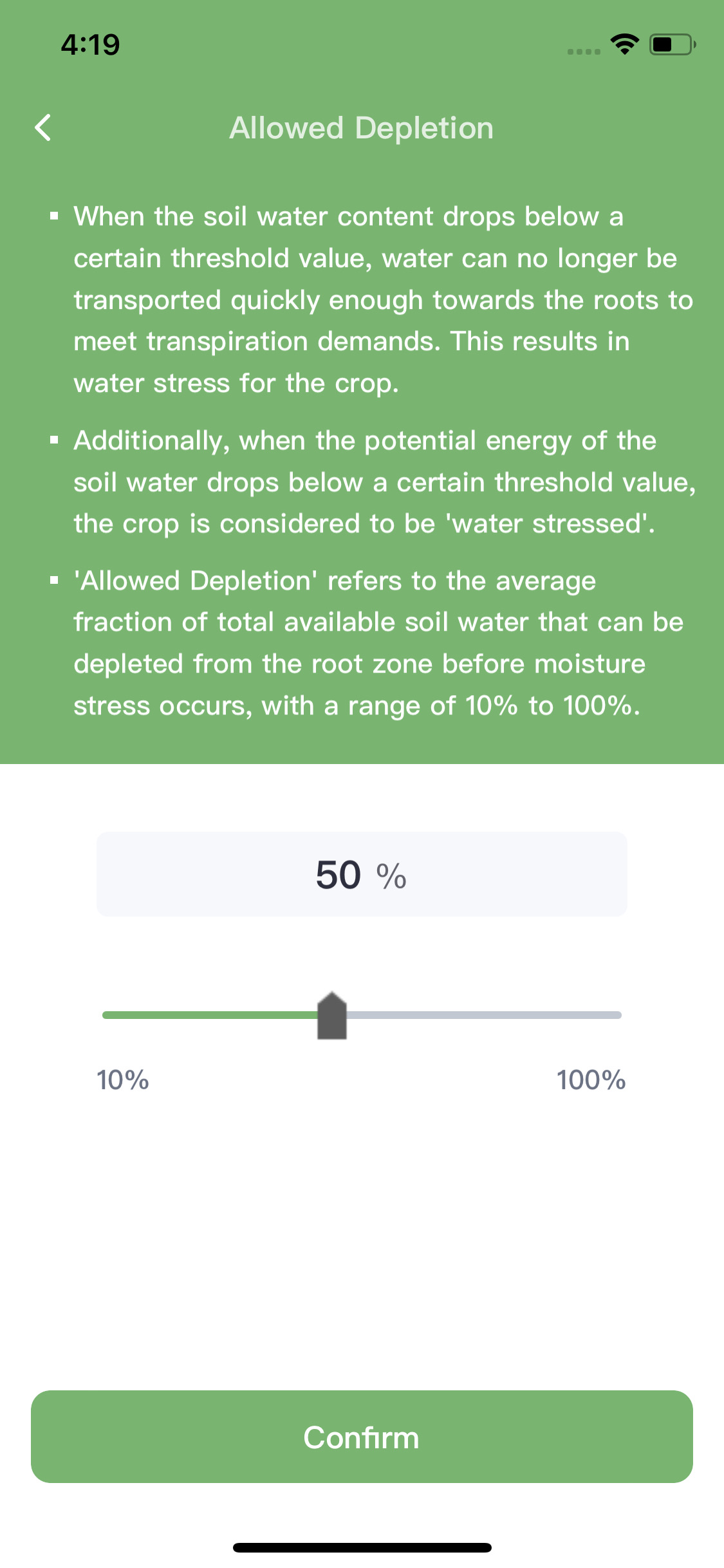
Please note, to modify the watering duration of an ET smart schedule by adjusting the zone attributes, you need to go to the schedule's details page and click on the circular icon in the top right corner of the "Watering Duration" section to update it. Finally, tap “Confirm” to save the changes.
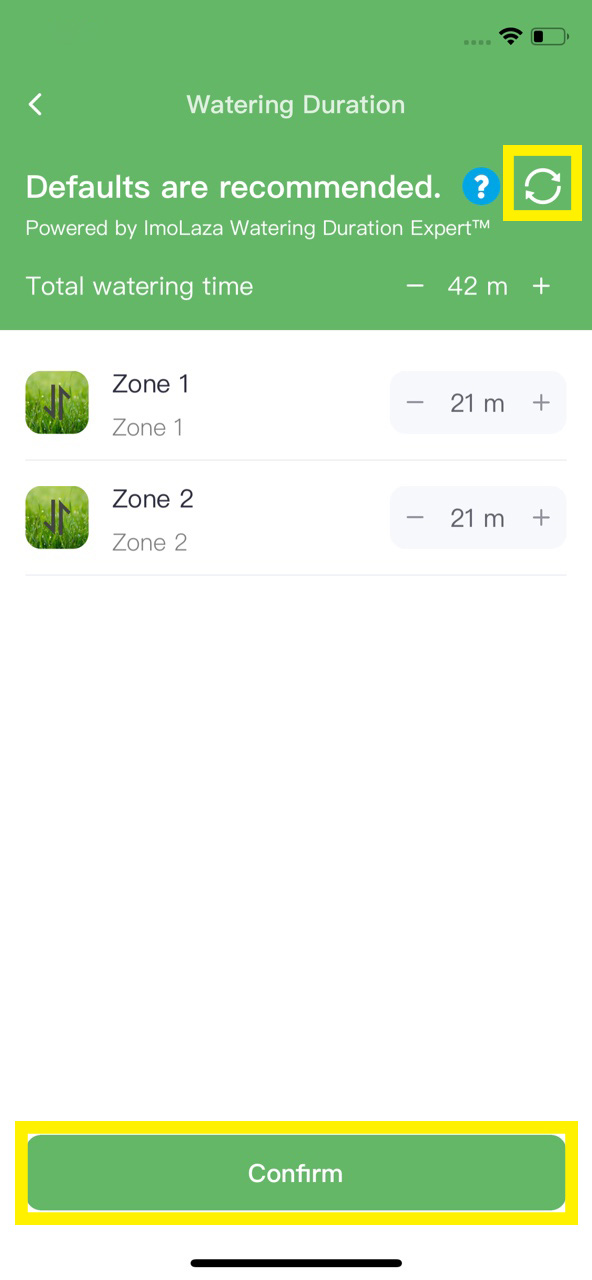
Still need help?
In case the above method doesn’t work for you, please contact our technical support team directly using the contact information below. We will respond to you by email within 12h after your message reaches us.
Email: Support@imolaza.com
